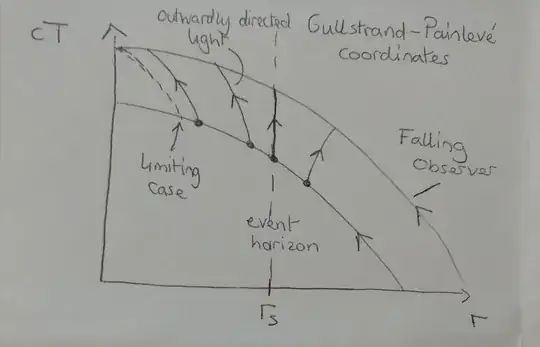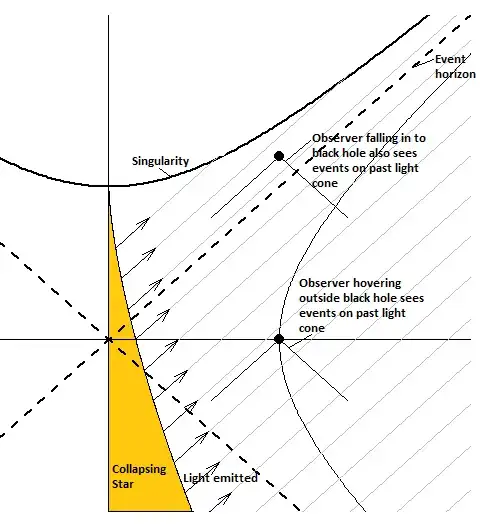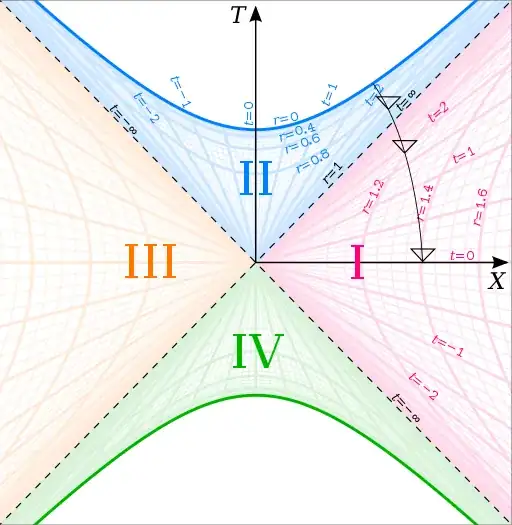Imagine you fall freely into a black hole. You place small test masses inside your frame with a fixed distance between them.
What will we see? The only force inside your frame is the tidal force. The closer to the center of the hole you get (or better, the center accelerates towards you, actually staying hidden behind the alleged horizon which gets closer and closer, so I guess, hitting you when you hit the hole(?)), the bigger the force. Falling through the horizon you notice nothing special if the mass of the hole is big enough.
The further you look towards the center the faster the test-masses accelerate away from you. Light from the test'masses can reach you (I guess, but I'm not sure).
So it seems there is a radial distance from behind which light can't reach you. In other words, there is an event horizon in front of you. Of course you won't be able to get out of the hole to reach the universe you fall from into the hole. That contact is lost forever and in the small amount of time that has passed on your clock the universe has run fast forward. So for the outside world you seem to freeze on the horizon situated on the outside radial r-coordinate. But in your falling frame there seems to be an horizon that's situated always below you. And by "always" I mean the small amount of the proper time that's left for you.
What can we say about this horizon? Is it really there?


